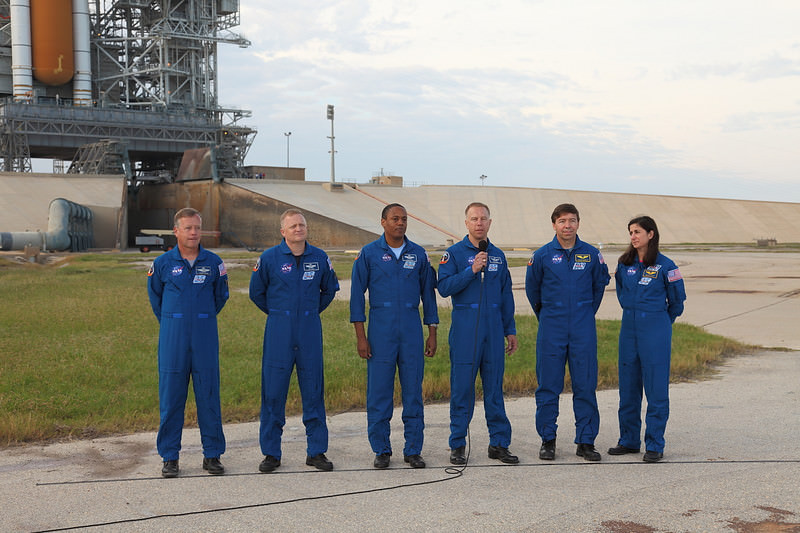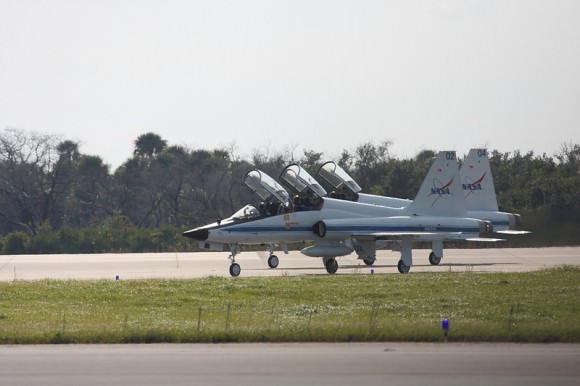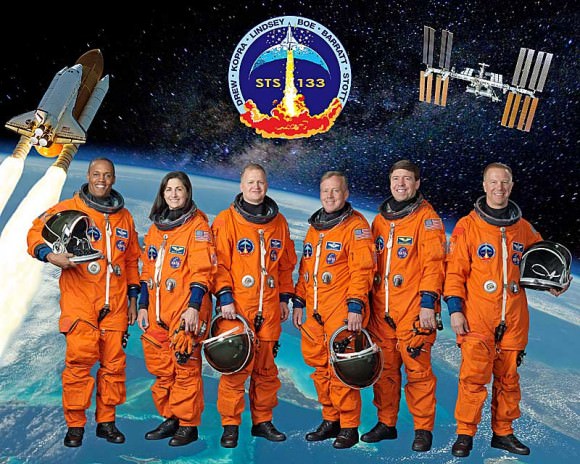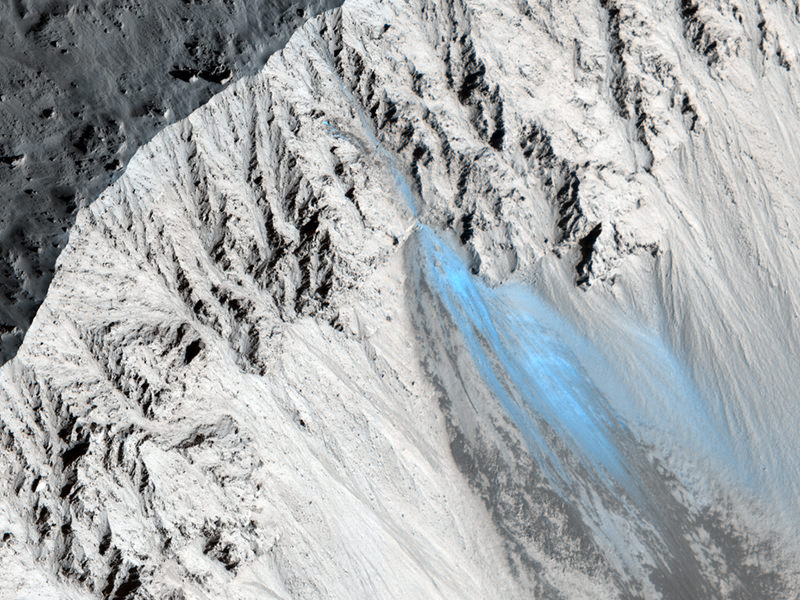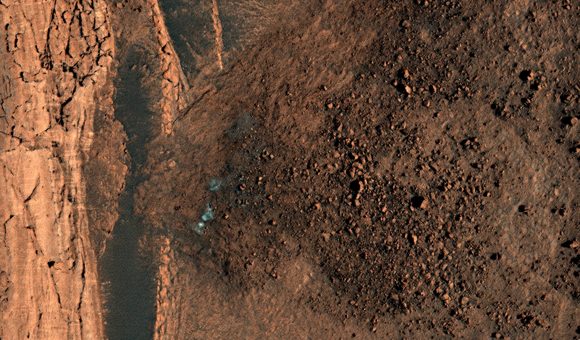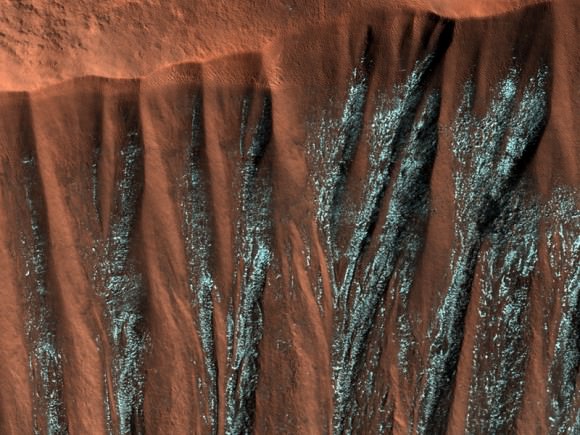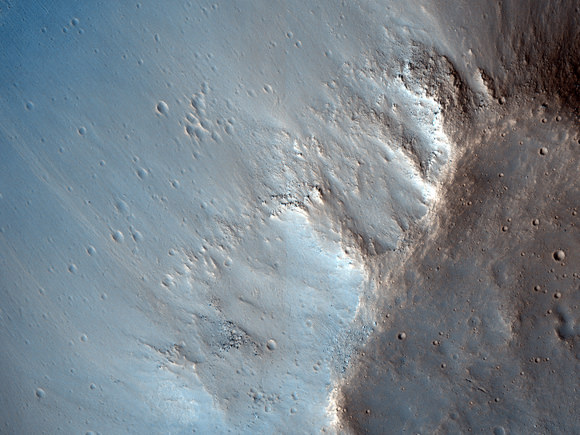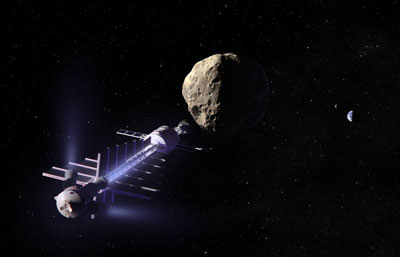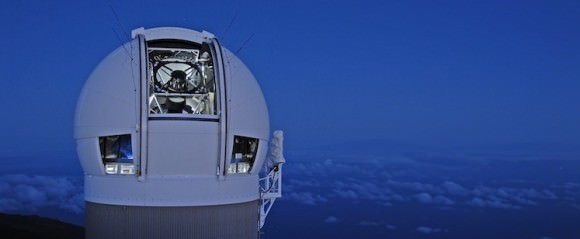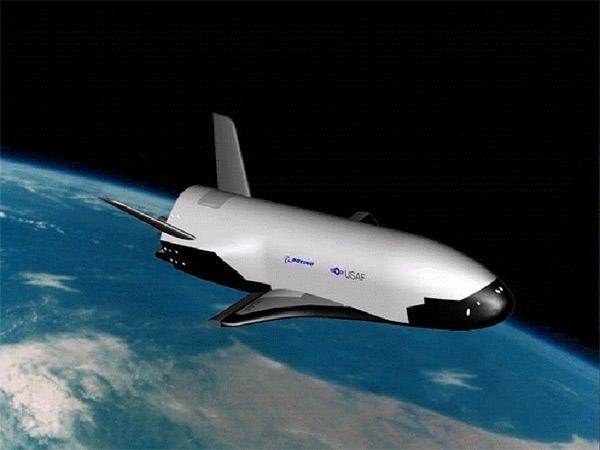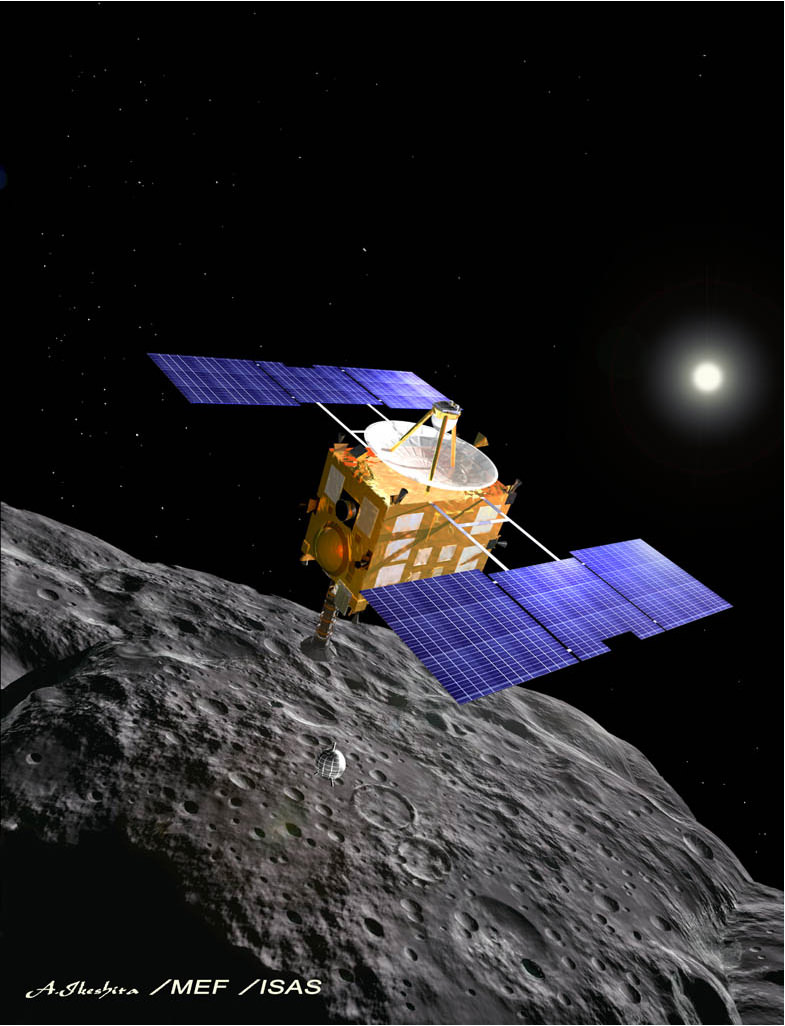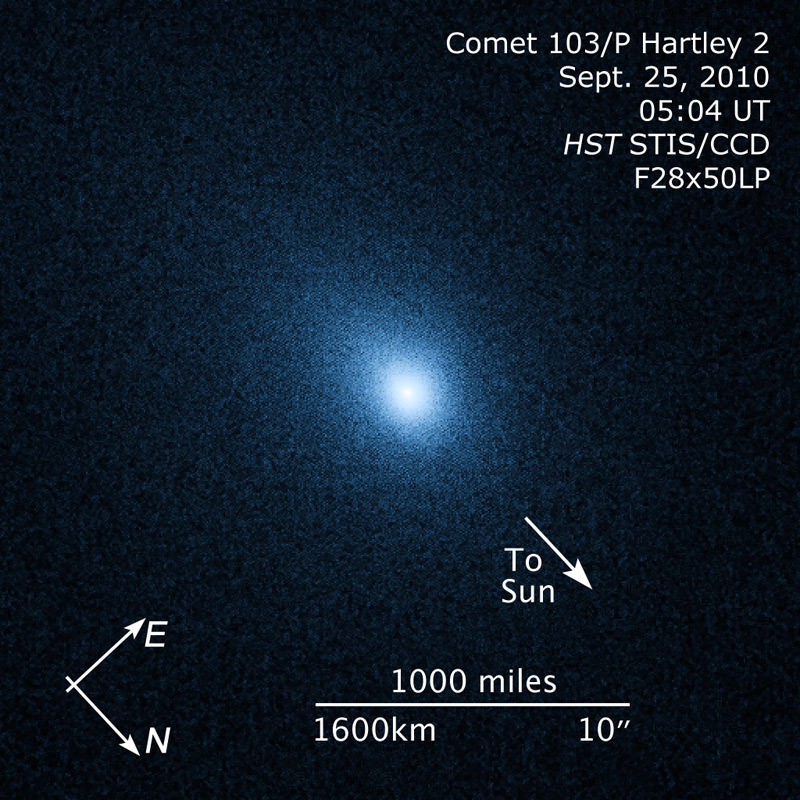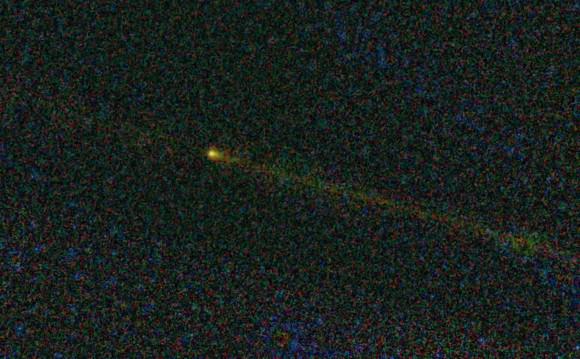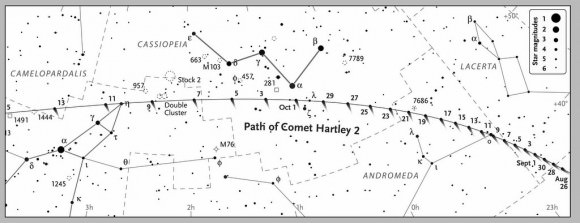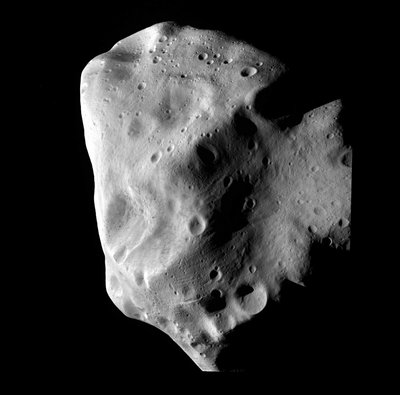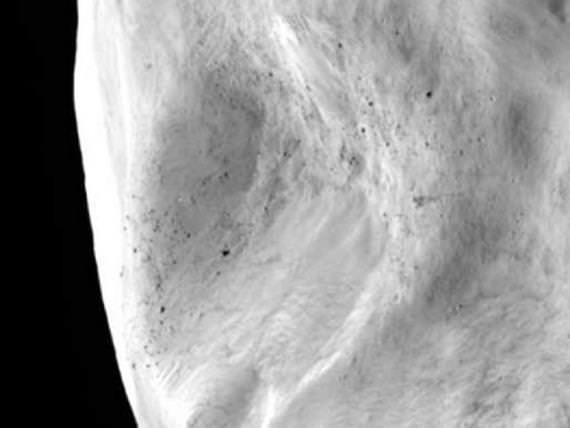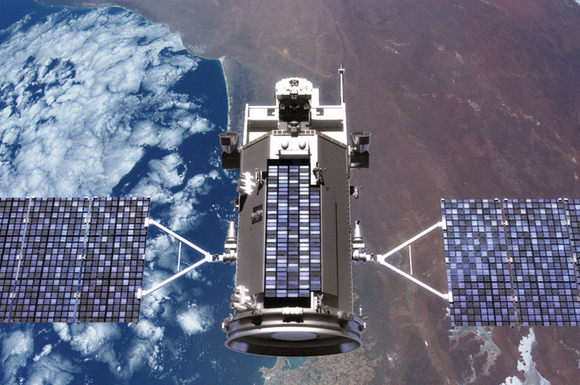[/caption]
A year ago, NASA successfully slammed a spent Centaur rocket into Cabeus Crater, a permanently shadowed region at the lunar South Pole. The “shepherding” LCROSS (Lunar Crater Observation and Sensing Satellite) spacecraft followed close on the impactor’s heels, monitoring the resulting ejecta cloud to see what materials could be found inside this dark, unstudied region of the Moon. Today, the LCROSS team released the most recent findings from their year-long analysis, and principal investigator Tony Colaprete told Universe Today that LCROSS found water and much, much more. “The ‘much more’ is actually as interesting as the water,” he said, “but the combination of water and the various volatiles we saw is even more interesting — and puzzling.”
The 2400 kg (5200 pound) Centaur rocket created a crater about 25 to 30 meters wide, and the LCROSS team estimates that somewhere between 4,000 kilograms (8,818 pounds) to 6,000 kilograms (13,228 pounds) of debris was blown out of the dark crater and into the sunlit LCROSS field of view. The impact created both a low angle and a high angle ejecta cloud. (Read more about the unusual plume in our interview with LCROSS’s Pete Schultz).
The LCROSS team was able to measure a substantial amount of water and found it in several forms. “We measured it in water vapor,” Colaprete said, “and much more importantly in my mind, we measured it in water ice. Ice is really important because it talks about certain levels of concentration.”
With a combination of near-infrared, ultraviolet and visible spectrometers onboard the shepherding spacecraft, LCROSS found about 155 kilograms (342 pounds) of water vapor and water ice were blown out of crater and detected by LCROSS. From that, Colaprete and his team estimate that approximately 5.6 percent of the total mass inside Cabeus crater (plus or minus 2.9 percent) could be attributed to water ice alone.
Colaprete said finding ice in concentrations – “blocks” of ice — is extremely important. “It means there has to be some kind of process by which it is being enhanced, enriched and concentrated so that you have what is called a critical cluster that allows germ formation and crystalline growth and condensation of ice. So that data point is important because now we have to ask that question, how did it become ice?” he said.
In with the water vapor, the LCROSS team also saw two ‘flavors’ of hydroxyl. “We saw one that was emitting as it if it was just being excited,” Colaprete said, “which means this OH could have come from grains — it could be the adsorbed OH we saw in the M Cubed data, as it was released or liberated from a hot impact and coming up into view. We also see an emission from OH that is called prompt emission, which is unique to the emission you get when OH is formed through photolysis.”
Then came the ‘much more.’ Between the LCROSS instruments, the Lunar Reconnaissance Orbiter’s observations – and in particular the LAMP instrument (Lyman Alpha Mapping Project) – the most abundant volatile in terms of total mass was carbon monoxide, then was water, the hydrogen sulfide. Then was carbon dioxide, sulfur dioxide, methane, formaldehyde, perhaps ethylene, ammonia, and even mercury and silver.
“So there’s a variety of different species, and what is interesting is that a number of those species are common to water,” Colaprete said. “So for example the ammonia and methane are at concentrations relative to the total water mass we saw, similar to what you would see in a comet.”
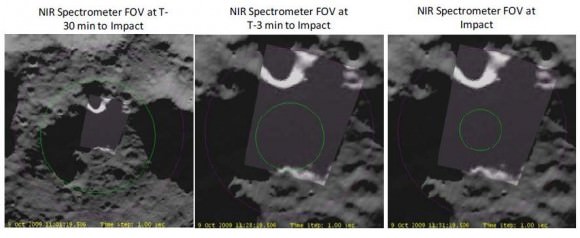
Colaprete said the fact that they see carbon monoxide as more abundant than water and that hydrogen sulfide exists as a significant fraction of the total water, suggests a considerable amount of processing within the crater itself.
“There is likely chemistry occurring on the grains in the dark crater,” he explained. “That is interesting because how do you get chemistry going on at 40 to 50 degrees Kelvin with no sunlight? What is the energy — is it cosmic rays, solar wind protons working their way in, is it other electrical potentials associated with the dark and light regions? We don’t know. So this is, again, a circumstance where we have some data that doesn’t make entirely a lot of sense, but it does match certain findings elsewhere, meaning it does look cometary in some extent, and does look like what we see in cold grain processes in interstellar space.”
Colaprete said that finding many of these compounds came as a surprise, such as the carbon monoxide, mercury, and particularly methane and molecular hydrogen. “We have a lot of questions because of the appearance of these species, “ he said.
There were also differences in the abundances of all the species over the time – the short 4 minutes of time when they were able to monitor the ejecta cloud before the shepherding spacecraft itself impacted the Moon. “We actually can de-convolve, if you will, the release of the volatiles as a function of time as we look more and more closely at the data,” he said. “And this is important because we can relate what was released at the initial impact, what was released as grains sublimed in sunlight, and what was “sweated out” of the hot crater. So that’s where we’re at right now, it’s not just, ‘hey we saw water, and we saw a significant amount.’ But as a function of time there are different parts coming out, and different ‘flavors’ of water, so we are unraveling it to a finer and finer detail. That is important, since we need to understand more accurately what we actually impacted into. That is really what we are interested in, is what are the conditions we impacted into, and how is the water distributed in the soil in that dark crater.”
So the big question is, how did all these different compounds get there? Cometary impacts seem to offer the best answer, but it could also be outgassing from the early Moon, solar wind delivery, another unknown process, or a combination.
“We don’t understand it at all, really,” Colaprete said. “The analysis and the modeling is really in its infancy. It is just beginning, and now we finally have some data from all these various missions to constrain the models and really allow us to move beyond speculation.”
LCROSS was an “add-on” mission to the LRO launch, and the mission had several unknowns. Colaprete said his biggest fear going into the impact and going into the results was that they wouldn’t get any data. “I had fears that something would happen, there would be no ejecta, no vapor and we’d just disappear into this black hole,” he confessed. “And that would have been unfortunate, even though it would have been a data point and we would have had to figure out how the heck that would happen.”
But they did get data, and in an abundance that — like any successful mission — offers more questions than answers. “It really was exploration,” Colaprete said. “We were going somewhere we had absolutely never gone before, a permanently shadowed crater in the poles of the Moon, so we knew going into this that whatever we got back data-wise would probably leave us scratching our heads.”
Additional source: Science


